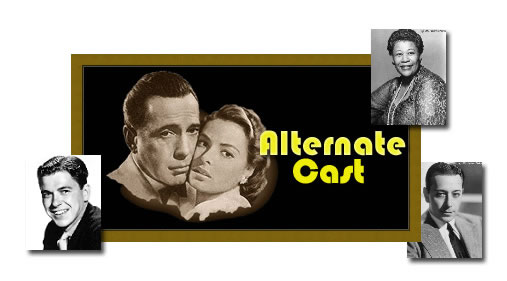
They Could Have All been in this Film!!
| The proper casting of a film is one of its most important components. A well-chosen cast delivers a lasting impression on the collective mind of the audience, and it might just be the reason why films such as CASABLANCA are remembered so fondly. But a memorable cast is made, not born, and if you are among the many who think that CASABLANCA achieved perfection in this facet of its production, please read on. You'll find that there were many other artists who were seriously considered for the key roles. Many were called, but few were chosen.... here are the most notable: |
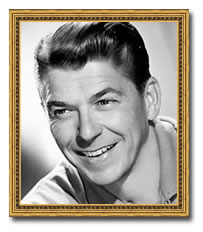 |
The political life of Ronald Reagan (1911-2004) eclipses his early days as a successful actor in Hollywood. Blessed with a great voice, nurtured when, as a young man, he was a sportscaster in a Des-Moines radio station, he was one of the main contenders for the role of Rick Blaine according to a Warner Brothers press release. (See Harmetz article) As an actor, Reagan possessed the charm that audiences of the 1940's adored. Aside from the camp classic "BEDTIME FOR BONZO" (1951), his portrayal of George Gipp in "KNUTE ROCKNE, ALL AMERICAN" (1940) with its famous line "Win just one for the Gipper..." will probably be his best remembered Hollywood character. The role of Rick might have earned Reagan superstar status and reserved for him a place in the Pantheon, but oddly enough, he earned his place in history as one of America's most popular presidents. |
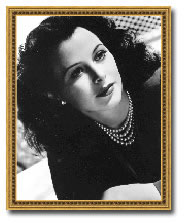 |
The allure of European beauty Hedy Lamarr (1913-2000) began when she appeared nude in the Czech film "ECSTASY" (1932). Born Hedwig Eva Maria Kiesler, she came to America and was featured in a number of films which ably showed her physical beauty and highlighted her seductive personality. Chief among these was "ALGIERS" (1938), a film which in spirit and locale was very close to CASABLANCA. Warner Brothers tried to borrow Lamarr from MGM, but at that time the studio was not letting anybody use her, so she was quickly dropped from consideration. Although she lost the role to Ingrid Bergman, she still managed to play the part of Ilsa Lund when "CASABLANCA" was presented by "The Lux Radio Theater," a weekly radio show which from June 1, 1936 to January 22, 1945 was hosted and directed by Cecil B. DeMille. CASABLANCA was aired on January 24, 1944, and Hedy Lamarr's co-stars were John Loder, Alan Ladd, and Edgar Barrier. You can hear that broadcast by going HERE. |
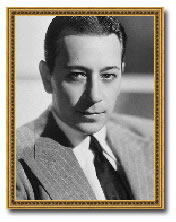 |
When George Raft (1895-1980) played the coin-flipping gangster Guido Rinaldo in Howard Hawks's film "SCARFACE" (1932), his on screen persona was frozen as that of a ruthless tough guy. Raised in New York's Hell's Kitchen, George Raft's life often mirrored the roles he played. By his own account he kept close ties to top mobsters, and was the owner of several casinos and gambling clubs. After "SCARFACE," however, Raft wanted to shed his tough guy image by accepting only nice guy parts, and refusing the heavy roles that he was offered. The parts that he'd turn down were then passed on to Humphrey Bogart, who always accepted them. The role of "Mad Dog" Roy Erle in "HIGH SIERRA" (1941) was first offered to Raft. When he refused, Bogart gladly stepped in. Bogart's success in this Hal Wallis film convinced the studio that he was a first-rate actor. Raft ended up helping out Bogart again by turning down the role of Sam Spade in the classic film noir "THE MALTESE FALCON" (1941), helmed by writer-turned-director John Huston. Bogart's success in this film eventually led to the studio offering him the role of Rick Blaine in CASABLANCA. Ironically, this was the role that Raft really wanted to play, but Hal Wallis rejected him early in the cast selection process. |
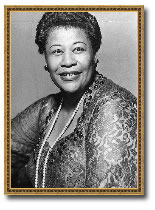 |
Famous all throughout the world as a superlative interpreter of jazz, Ella Fitzgerald (1917-1996) was one of the many performers that Hal B. Wallis considered for the role of the entertainer at Rick's Café Américain. One of the many problematic aspects of the CASABLANCA script was that the gender of some of the characters was not definite even as the production entered into principal photography. The part, which would eventually be called Sam, and go on to be immortalized by Dooley Wilson, afforded the screenwriters an opportunity to give the character of Rick Blaine a friend, confidant, and sidekick. Had it been played by Ella Fitzgerald (or any other black actress, for that matter) CASABLANCA's love triangle might have turned into an interracial rectangle -- a twist that Hollywood was not ready for in the 1940's. Fitzgerald ended up making very few films, some of the titles include, for Warner Brothers "PETE KELLY'S BLUES" (1955), and "ST. LOUIS BLUES" (1958) for Paramount. No question that Hal B. Wallis made the right choice with Dooley Wilson, but wouldn't it have been wonderful to have experienced Ella Fitzgerald singing "As Time Goes Bye" in the smoked-filled Café? |
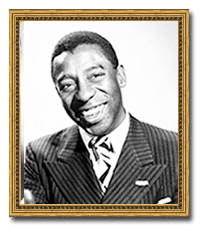 |
Clarence Muse was born in Baltimore and attended Dickinson College where he received a degree in international law. Soon, however, he was lured to the New York stage where he performed with the Lincoln Players and the Lafayette Players, acting troupes during the famous Harlem Renaissance. He moved to Hollywood where his screen acting career began with the film Hearts in Dixie, the first all African-American film. Muse was also a composer, and one of his songs, "Sleepy Time Down South," became a standard, and a signature hit for Louis Armstrong. In his autobiobraphy, producer Hal B. Wallis writes that the reason why he did not select this fine actor and musician to play the role of Sam was because "he seemed too much a caricature of a black type." Eventually, Clarence Muse would finaly play the role of Sam in two episodes of the 1955 television version of Casablanca. Clarence Muse died in 1979 in Perris, California. |
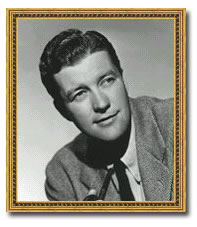 |
Dennis Morgan (1910-1994) was perhaps Warner Brothers' most successful "B" leading man during the '30's and '40's. He started in show business as a radio announcer, and a small-time opera singer, and in 1936, using his real name (Stanley Morner), he made his film debut in "THE GREAT ZIEGFELD" (1936). In 1939 he changed his name to Morgan, and began to be featured alongside some of the greatest stars of his day. Films such as "THE FIGHTING 69TH" (1940) with James Cagney and "KITTY FOYLE" (1940), which has the Academy Award winning performance of Ginger Rogers, best show the pleasant essence of this versatile actor. But perhaps the movie that made him a contender for the part of Rick in CASABLANCA was the western "BAD MEN OF MISSOURI" (1941). This was a "B" movie that not only offered him a starring role opposite Jane Wyman, but also earned him critical success in a part that Humphrey Bogart had turned down. So, why didn't Morgan get the part? It is a question of "A" versus "B." Morgan was just a "B" contract player, and CASABLANCA was being made as an "A" picture. Thanks to "THE MALTESE FALCON," Bogart had just become the "A" commodity that Warner Brothers was looking for. |
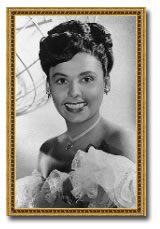 |
Lena Horne (1917-2010) started in the chorus of the famous Cotton Club in New York's Harlem and went on to become one of the best known entertainers of her day. The first black performer to sign a long-term contract with a major studio -- MGM, Horne was one of the thirty or so black actors and entertainers that Hal B. Wallis considered for the role of the singer at Rick's Café Américain; a list which also included Manhattan society singer Hazel Scott, and character actor Clarence Muse. As with Ella Fitzgerald, Lena Horne was fairly quickly dropped from the cast of CASABLANCA when the screenwriters began to come around to the inevitable conclusion that the cafe singer had to be a man. Unlike Ella Fitzgerald, Lena Horne cultivated her Hollywood fame and status -- which flourished despite racism, and the 1950's McCarthy blacklist -- and she went on to perform in some of Hollywood's most important musicals. "CABIN IN THE SKY" (1943), "STORMY WEATHER" (1943), and "ZIEGFELD FOLLIES" (1946) are three of the most memorable ones. |
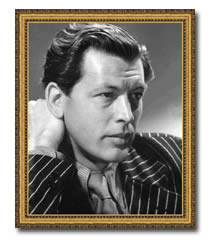 |
With his handsome dark looks and incredible charm, character actor Philip Dorn (1901-1975) was a famous matinée idol in Germany and in his native Holland before he fled to the United States a few years prior to the outbreak of World War II. In Europe, under the name of Fritz van Dongen, he made many films from the time that he was fourteen. In Hollywood from 1939, he also played leads, often anti-Nazi patriots and continental lovers. It was at around this time, perhaps the height of his popularity, that rumors began to swirl that he would be joining the cast of the upcoming CASABLANCA, playing the role of Victor Laszlo. In the late 1940's he switched to more mature character roles, memorably as Papa to Irene Dunne's Mama in I REMEMBER MAMA (1948). Dorn was hampered by ill health from his childhood. Long plagued by phlebitis, he suffered the first of a series of strokes in 1945. In the early 1950's he returned to Europe, where he appeared in a number of films and plays, but retired in 1955 following an injury in a stage accident. He spent his remaining years confined to his California home, living in retirement with his wife, Dutch actress Marianne Van Dam. |
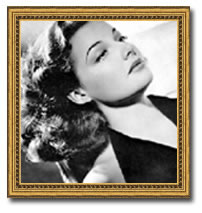 |
From 1934 to 1935 Ann Sheridan (1915-1967) made twenty-four films: most of them for Paramount, most of them using her real name (Clara Lou Sheridan), and except for "BOLERO" (1934) and Cecil B. DeMille's "THE CRUSADES," (1935) the majority of them totally forgettable. In 1936, she switched to Warner Brothers, the studio changed her name to "Ann," and thanks to a publicity campaign that billed her as the "Oomph Girl," and her appearance in some of the best films of the studio's social-crime melodrama cycle -- "ANGELS WITH DIRTY FACES" (1938), "THEY MADE ME A CRIMINAL" (1939), and "THEY DRIVE BY NIGHT" (1940) -- Ann Sheridan became a star. Her screen persona was that of the sexy girl next door: a kind of America's sweetheart with an edge, and thus she was the perfect choice to portray the role of Lois Meredith. (The Ilsa Lund character was, in the first few drafts of the script, not a beautiful Scandinavian, but an American jet-setter.) When the writers decided to change the role from Lois to Ilsa, Ann Sheridan was discarded. She went on to star in many more films including "KINGS ROW" (1942) -- one of the best performances she ever gave. |
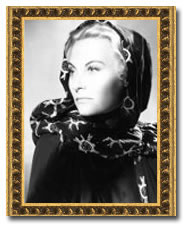 |
Young French actress Michèle Morgan (1920-2016) almost played the role of Ilsa. As Aljean Harmetz writes, "Michèle Morgan might well have been chosen to play Ilsa Lund if she hadn't asked for $55,000." This was an exorbitant amount at that time and Hal B. Wallis knew that he could get Ingrid Bergman for less money. And he did. Ingrid Bergman was borrowed from David O Selznick for a "reasonable" $25,000, and Michèle Morgan was dropped from consideration. The choice of Bergman over Morgan was simply an economic decision. Both actresses were relative new-comers to film, and both had had a fair amount of success in their respective Hollywood debuts. But as Harmetz reminds us: "It was CASABLANCA that made Ingrid Bergman a star. Would it have done the same for Michèle Morgan who made a fine debut in "JOAN OF PARIS" (1942) but whose Hollywood career ended after three films?" |